Musician Appreciation Concert 2022
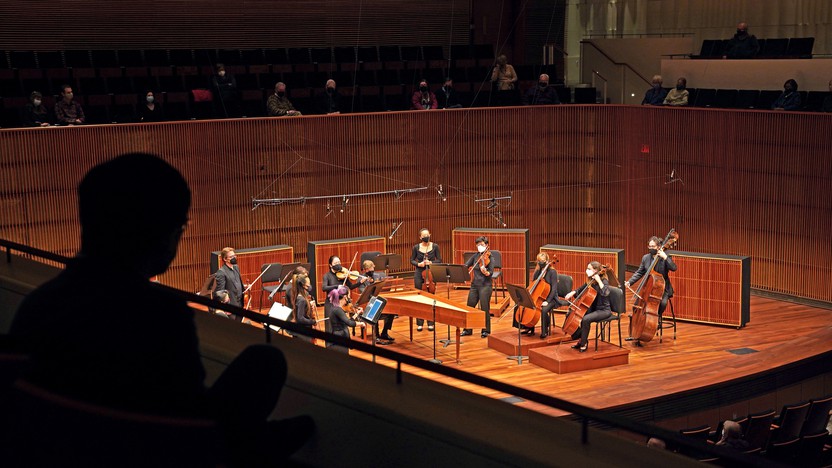
Sponsored By

Sponsored By

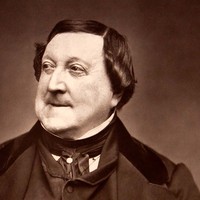
The 21-year-old Gioachino Rossini already had ten operas under his belt when he composed L’Italiana in Algeri (The Italian Girl in Algiers), and it took him only 18 days to craft the recycled libretto into a two-act dramma giocoso. It was this comic opera, along with the more serious work Tancredi, composed a few months earlier, that elevated Rossini from a successful working musician in Venice to an international opera star.
The premise of L’Italiana in Algeri is that the sultan Mustafà, bored with the submissive wives in his harem, decides he must find a strong-willed Italian girl. He lucks out when a shipwreck delivers the beautiful Isabella to his shore, but in the end she proves to be more than he can handle. In the overture (or sinfonia in Italian parlance), the music follows the same sonata-allegro structure that Joseph Haydn perfected in his symphonies, including the optional slow introduction that was a Haydn staple. And clearly the young Rossini learned plenty about musical humor from jolly “Papa” Haydn, as heard in the shocking outburst that interrupts the introduction’s idyllic plucking. There is barely a trace of the opera’s North African setting in the overture (maybe just a whiff of exoticism in the woodwind solos and the spirited percussion), but audiences at this type of comic opera weren’t expecting verisimilitude; they were there to get swept up in Rossini’s wild crescendos, unforgettable tunes and infectious joy.
Aaron Grad ©2025
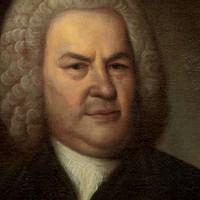
Johann Sebastian Bach probably composed his Concerto for Two Violins around 1730, not long after he agreed to lead Leipzig’s Collegium Musicum. This talented amateur group, founded in 1702 by a young Georg Philipp Telemann, provided an outlet for Bach to play instrumental music in a sociable atmosphere, away from the weekly grind of his church duties. Many of the works that Bach brought to the Collegium were arrangements of works from an earlier period when he worked a secular job in Cöthen, so it is possible that the Double Violin Concerto had its origins in some earlier source material.
Along with Bach’s two surviving Violin Concertos (also prepared for the Collegium), the Double Concerto borrows from a style popularized several decades earlier in northern Italy by Vivaldi and his contemporaries. Following the Antonio Vivaldi model, a ritornello structure in the first movement sets up a strong theme in the accompanying ensemble that makes its presence felt with every return. The added magic in this movement is the sophisticated counterpoint, drawing on the fugue techniques that Bach advanced far beyond his Italian colleagues. Counterpoint is a crucial feature of the slow movement as well, with the two soloists weaving a patient fugue over an accompaniment that has just enough of a dancing lilt (and a tempo that Bach made sure to mark as “not too slow”) to propel the melodies forward. The contrapuntal technique of canon — with one voice following close after another in an echo effect — makes for a particularly vibrant finale.
Aaron Grad ©2024
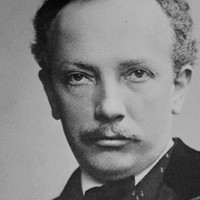 Listen to Audio
Listen to Audio
After the enormous success of their 1911 opera Der Rosenkavalier, librettist Hugo von Hofmannsthal returned to Baroque-era inspiration for his next collaboration with the reigning king of German opera, Richard Strauss. Hofmannsthal suggested reworking Molière’s comedy-ballet Le Bourgeois gentilhomme, which first played for the court of King Louis XIV in 1670 with incidental music by Jean-Baptiste Lully.
Strauss and Hofmannsthal struggled to find the right format for their Molière adaptation. They first incorporated an abridged translation into the 1912 theater-opera hybrid Ariadne auf Naxos, but a format that embedded an entire opera within a substantial play proved cumbersome. When they revised Ariadne auf Naxos in 1916, they removed most remnants of the Molière play, including the charming incidental music Strauss had composed, some of it based on Lully’s original score. But that music and some new additions came back when they revived the Molière project on its own, and Strauss found an even more congenial home for that material when he assembled this concert suite in 1920.
The suite’s Intermezzo was originally the prelude to the second act, written to accompany the entrance of several aristocrats in music that Strauss marked “galant and graceful.” The tentative hiccups and unsteady chromatic slurs in the Minuet capture the awkwardness of a dance lesson.
Aaron Grad ©2022
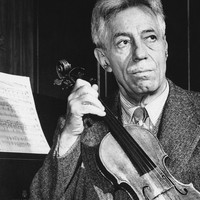
A violin virtuoso of the highest order, Austria’s Fritz Kreisler was also a mischievous and chameleon-like composer, often attributing his works to long-dead or fictitious forebears. Among his many musical bonbons, the ones rooted in his native Vienna are especially sweet, including this “Miniature Viennese Waltz” from 1924. A minor-key march theme hints at the influence of Roma (i.e. “Gypsy”) musicians on the type of music that filled Vienna’s cafés, while a contrasting major-key theme unfolds in sweet harmony. This version by the German arranger Fredo Jung transfers Kreisler’s tuneful melodies and oom-pah accompaniment to a trio of violin, viola and cello.
Aaron Grad ©2022
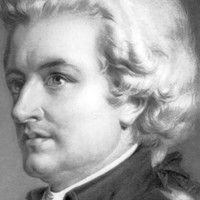
A year after Wolfgang Amadeus Mozart married Constanze Weber without his father’s blessing, the young couple left for Salzburg in the hope of smoothing the family tension. On their return trip to Vienna several months later, they stopped in Linz, where their host, Count Johann Joseph Anton von Thun-Hohenstein, arranged for the court orchestra to perform a concert. Mozart wrote to his father, “I really cannot tell you what kindnesses the family are showering on us. On Tuesday, November 4, I am giving a concert in the theater here and, as I have not a single symphony with me, I am writing a new one at breakneck speed, which must be finished by that time.” It was breakneck speed indeed, for Mozart only arrived on October 30, leaving him less than five days to compose the new piece, copy out the parts, and rehearse with the orchestra.
Mozart’s Symphony No. 36 in C Major, nicknamed “Linz” for its city of origin, betrays no evidence of strained composition. In fact, it is rare among Mozart’s symphonies in that it begins with a leisurely introduction. The opening harmonies wander away from C-major and settle in C-minor, creating a moody counterpoint to the generally bright disposition of the symphony. Further excursions into minor keys, in the first movement’s secondary theme and later in the graceful Andante, echo the tonal rub of the introduction. After a playful Menuetto, the Presto finale sprints through a fluid range of themes, with short motives bouncing among sections. There is a family resemblance between this finale and another C-major movement that is among Mozart’s most famous, the contrapuntal closing of the Symphony No. 41 (“Jupiter”).
Aaron Grad ©2022
After hosting a virtual event last year due to the ongoing COVID-19 pandemic, we are excited to welcome audiences back to the Ordway Concert Hall for this special concert, which will showcase the extraordinary talents of our musicians in solo and ensemble performances and will feature unique opportunities to get to know members of the orchestra. The concert will also be livestreamed for free to audiences at home.
All proceeds from this event will go directly to SPCO musicians in appreciation for the passion, dedication and incredible artistry they share every year.
All audience members are required to present proof of COVID-19 vaccination and booster shot, or a negative COVID-19 test within 72 hours prior to attending this event. Non-cloth masks (N95, KN95, KF94 or surgical masks) are required regardless of vaccination status. More Information
Concerts are currently limited to 50% capacity to allow for distancing. Tickets are available by price scale, and specific seats will be assigned and delivered a couple of weeks prior to each concert — including Print At Home tickets. Please email us at tickets@spcomail.org if you have any seating preferences or accessibility needs. Seating and price scale charts can be found at thespco.org/venues.
Prefer to enjoy the concert from home? This event will be streamed live for free via the SPCO Concert Library.
We hope all viewers will make a contribution to the event to support our wonderful musicians.
Can't attend, but still want to support the musicians of the SPCO? You can make a gift directly. All proceeds from this event will go to SPCO musicians in appreciation for the passion, dedication and incredible artistry they share every year. Make your gift today.
Event Packages
Ticket packages are also available for purchase. To reserve a Gold or Silver event package, please contact Jasmine Magner at 651.292.6988 or jmagner@spcomail.org.
Gold – $10,000 (includes 10 premium tickets)
Silver – $5,000 (includes 6 premium tickets)
Note: Your ticket purchase total minus $15 per ticket is tax deductible to the extent allowed by law. Please note that it is our policy that donations made to this event are non-refundable.
Increase your support for the musicians with a special matching gift opportunity
The SPCO Board of Directors and Governing Members will match all new or increased gifts for the Musician Appreciation Concert. If you supported last year’s Musician Appreciation Concert, we hope you’ll increase your gift this year, and the amount of your increase will be matched. If you didn’t support last year’s event, your entire gift this year will be matched!
What portion of my ticket purchase is tax deductible?
The fair market value of each ticket is $15; that means the remaining amount of the purchase price for each ticket to this special event is a donation to the musicians of the SPCO.
Example: An SPCO fan purchases a premium ticket for $1,000. $985 of the purchase price is a tax-deductible donation; the remaining $15 is the cost of admission. Please note that it is our policy that donations made to this event are non-refundable.
What happens if the Musician Appreciation Concert is postponed due to COVID?
Ticket holders will automatically have their tickets transferred to the rescheduled event date. Ticket holders will also have the option, if they wish, to either donate or refund the fair market value of their ticket purchase prices ($15/ticket). Please note that the portion of each ticket purchase that is a tax-deductible donation is non-refundable.
Example: An SPCO fan purchases a premium ticket for $1,000. They wish to refund their ticket. The SPCO is able to refund $15, the fair market value of admission. The remaining $985 is a non-refundable donation to the musicians of the SPCO.
I’m not currently attending in-person events. Is there an option to participate virtually?
Yes! This special event will be livestreamed free of charge through the SPCO Concert Library. Because this event is a special celebration benefitting the musicians of the SPCO, we hope that all virtual attendees will make a donation. See above for details on how to make your gift.
Get driving directions and find nearby parking.
Find dining options close to the venue.
View seating charts to find out where you'll be seating.
SPCO concerts are made possible by audience contributions.
For exclusive discounts, behind-the-scenes info, and more:
Sign up for our email club!
